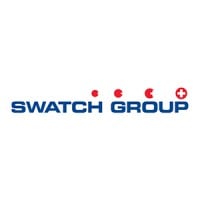
Swatch Group
Swatch Group is the world's number one manufacturer of finished watches. With its 16 watch brands, the Group is present in all price segments, and is also active in the manufacture and sale of jewelry, watch movements and components. Swatch Group unites, among other companies, the following watch brands under its roof: Breguet, Harry Winston, Blancpain, Glashütte Original, Jaquet Droz, Omega, Longines, Rado, Union Glashütte, Tissot, Balmain, Certina, Mido, Hamilton, Swatch and Flik Flak. The Group has a strong distribution and multi-brand retail net with two sophisticated boutiques under the name of Tourbillon and Hour Passion. Swatch Group is also an important player in advanced nanomechanical, nanoelectronic and Bluetooth technologies essential to watchmaking and other industries. The Group employs 32,500 persons in over 50 countries. In 2024 Net Sales amounted to CHF 6.74 billion.






